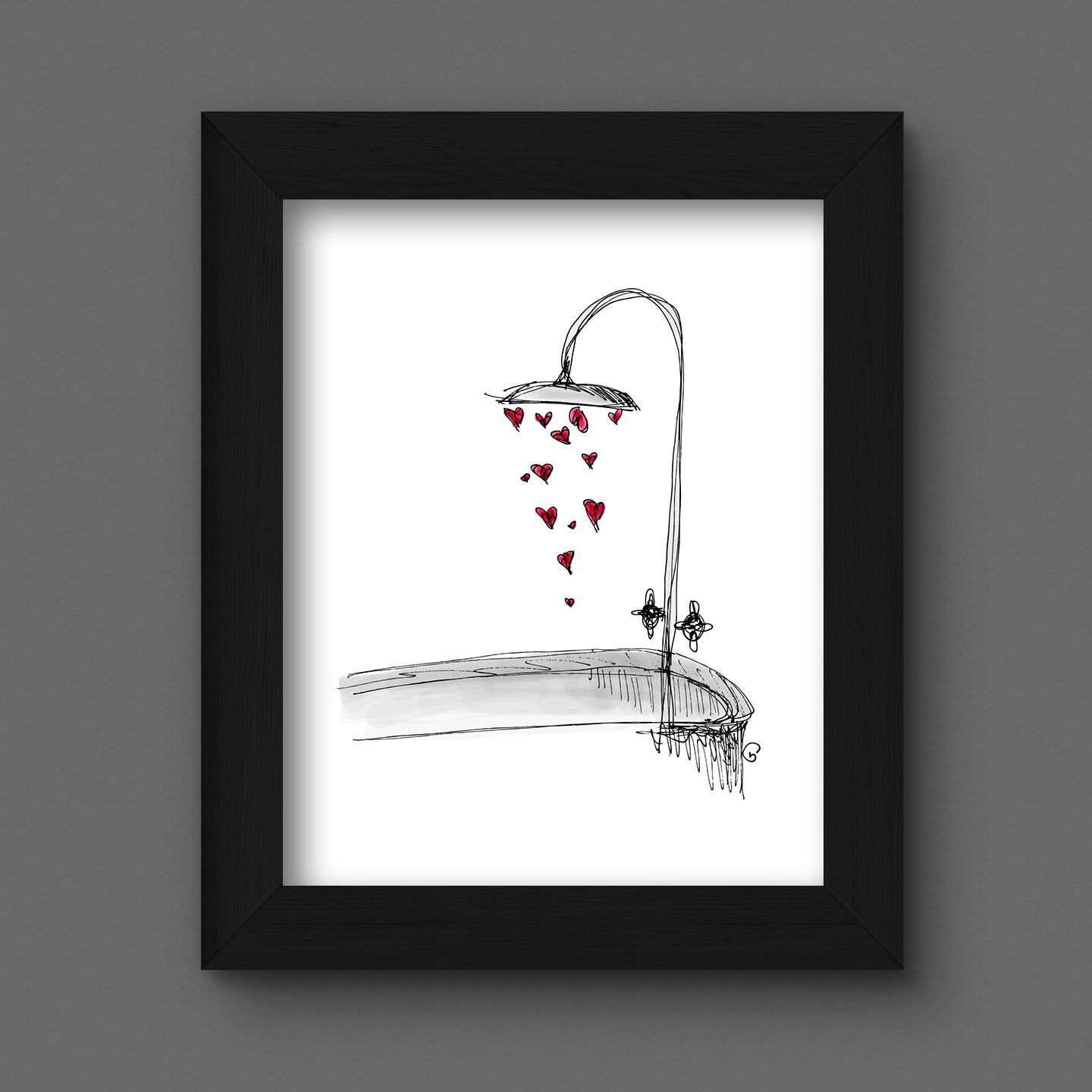Brief One: Self-Initiated Projects
A self-initiated illustration series using ink and digital water color.
LECTURE REVIEW
Our first brief this course looks at self-initiated projects. We hear from practicing designers who answer the following two questions:
How do you identify subjects for self-initiated projects?
How do you structure and plan the production of self-initiated projects?
OFFSHORE
Christoph Miller explains how he maintains a list of ideas and themes and is perpetually looking for ways to insert self-initiated projects into his work. Structure and scale vary by the project’s framework and available resources — this can include grant or personal funding — which has an impact on any project’s approach and viability.
HEY
Vernonica Fuerte looks to client-declined ideas as a source of inspiration for her self-initiated projects. Perhaps she really enjoyed a concept that was not selected by a client, but is still interested in pursuing. Otherwise, she will work from a clean slate. She uses the same approach when engaging on self-initiated projects as she would client work in that she allows for a set period of time for exploration of ideas and creative pathways.
FROST COLLECTIVE
Vince Frost’s passions are what typically drive his self-initiated projects. He tends to either work on them individually or depending on scale and scope, employ members of his team at Frost Collective. He is keenly interested in projects that can give back to the community in some way, provide opportunities for new or furthered connections, or even new business opportunities for his agency.
BOMPAS & PARR
Sam Bompas subscribes to the ethos that everyone has creative ideas and experiences, and further, that they are not limited to the population set called “creatives.” He employs a set approach to all of his projects — self-initiated or client driven — that follows six unique phases:
Initial outlines
Scoping
Budget
Timelines
Identify a team
Design phases/implementation
WERKFLOW
James Stringer of Werkflow’s keen interest in music and its connection to video games along with his interest in 3D design has kept his attention on a unique self-initiated project: Sovereign, a video game. He found designers with common interests from his community and youth to apply their skills on this project. It had originally stemmed from a previous idea. From there a script was developed, focus group testing with appropriate target audiences commenced. In this case, it was teenagers, to glean key insights about how the project was (or wasn’t) effectively coming together. The initial phase of the project — a teaser trailer — was developed to be previewed key events to secure interest in funding the balance of the project. Once funding was secured, the team regrouped on how best to develop and execute the remainder of the project which included budget and timeline reviews.
BRIEF ANAYLSIS
WHAT IS A BRIEF?
A brief — often called project brief, or creative brief — by its simplest definition is a written description of a project that required some form of visual design. In depth explorations of the various ways in which briefs can be designed and developed reveal a myriad of inputs that serve as a road map and guide for a designers, clients, stakeholders, etc. to follow and revisit throughout any design project.
FORMAT & LENGTH
The format of a brief can take many forms. The most common use either a narrative, bulleted list, or presentation approaches. The length of the brief is determined most often by whichever information is required to effectively produce the desired outcomes. It is to be as useful as possible to yield effectiveness.
STIR-FRY
In Creating the Perfect Design Brief, this week’s research literature, there was an excerpt from Kim Zarney’s The Core Creative Concept in Branding: A Streamlined Approach. It was helpful to have things put in terms that make it seem simpler; Zarney compared the ease of creating a brief to the ease of creating a perfect stir fry. It just depends on what you intend your end product to look and feel like, and if you have those ingredients READY. Not just available to you, but ready to add in as soon as you begin. Things will go much faster if you write down and have a good idea of every section and then worry about the wording and professionalism of the thing in its entirety when you have your main points down.
INGREDIENTS: ESSENTIAL ELEMENTS OF THE BRIEF
Project Overview: What are we doing this project? What are the results we want to achieve? This section clearly articulates the scope of the project, business needs, and the objectives of the project as well as the desired outcomes and ownership.
Category Review: In this section it’s important to review the various category implications of the project including:
What industries are involved?
What products are appropriate for review?
Who is the competition? What are they doing well? Where are our opportunities?
Pricing and promotional considerations
Brand perception
Industry trends
Overall company business strategy
Target Audience: This section should be as detailed as possible. To say your target audience is “women” is grossly insufficient. Demographics should be outlined to include: geography, culture, age, income, insights, gender, etc.
Company Portfolio: includes your organization’s or clients brand position.
Business Objectives: are important to consider to ensure that the project is in alignment with overall organizational mission.
Project Scope, Timeline, & Budget: This outlines how the projects will be confined as well as critical detail by which the project will be successful. It enables the project to be broken into discrete parts and phases. The various individuals or teams needed to complete the project are outlined in this section as well as who will be providing necessary approvals, implementation, and measurement tactics.
Research Questions: This section helps to inform the overall project to ensure the approach is sounds and founded.
Appendix: This section serves as a catch-all for any information that doesn’t fit neatly into the aforementioned sections.
REFERENCE
Phillips, P (2004) Creating the Perfect Design Brief: How to Manage Design for Strategic Advantage. (New York: Allworth Press)
Falmouth University (2018). Brief Analysis | Podcast Videos. Application and Interactions GDE740 19/20 Part-Time Study Block S1 (Falmouth, UK: Falmouth University)





